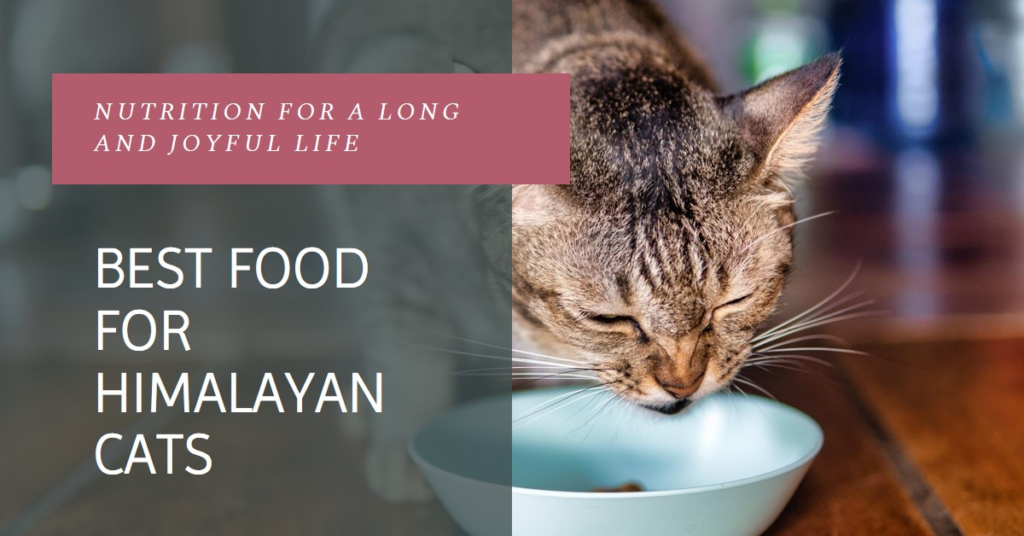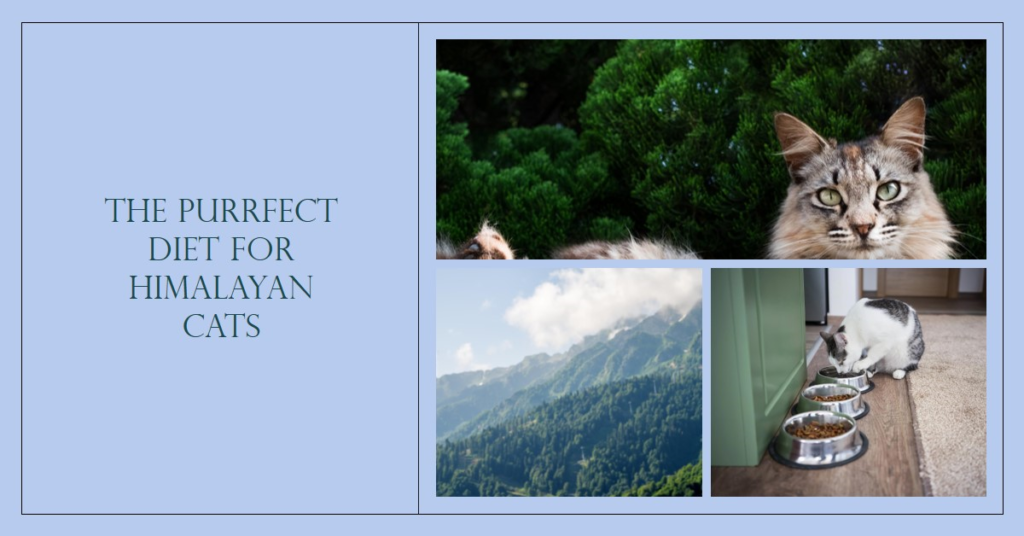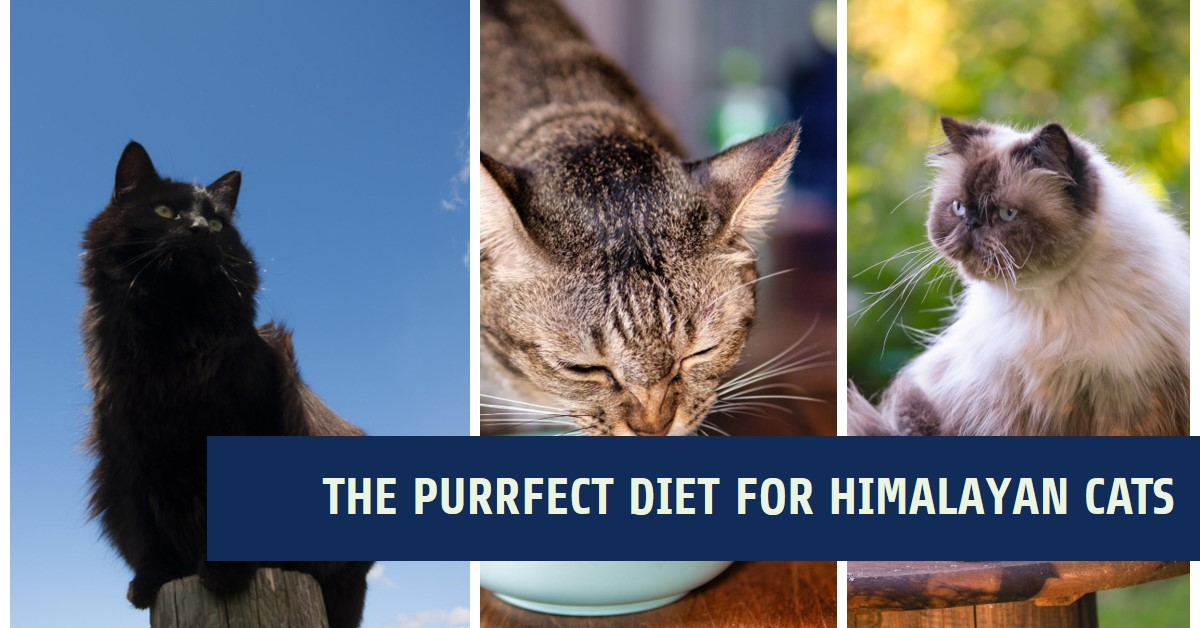What is the ideal diet for our furry feline friends from the high-altitude Himalayan mountains? As caring owners, we want to ensure our Himalayan cats get the optimum nutrients in their food to keep their energy levels high and coats shining.
In this article, we will explore the nutritional needs of Himalayan cats and recommend some of the Best Food For Himalayan Cats. A balanced diet is essential for their health and happiness. Let’s learn about providing our Himalayan companions with food that mimics their natural diet for a long and joyful life together.
Dry or Wet Food?
One of the first considerations for Best Food For Himalayan Cats is whether to feed your Himalayan cat dry or wet food. Both have pros and cons. Dry food for Himalayan cats helps clean your cat’s teeth and is cheaper and easier to store than wet food. However, cats need moisture, and most dry foods are not hydrated.
Wet food for Himalayan cats provides moisture and has a more natural texture and smell that cats enjoy. It also contains more meat-based proteins and fewer carbohydrates than dry food. While more expensive, wet food may help reduce weight gain and urinary issues in some cats. An ideal option is to provide both dry and wet food.
Quality Ingredients For Himalayan Cats
The next important factor is the quality of ingredients in the food. Cats need meat proteins, healthy fats, vitamins, and minerals for strong muscles, coats, and immune systems. In commercial foods, look for meat like chicken, fish or lamb to be within the first three ingredients and avoid fillers like cereal grains.
Also consider limited ingredient diets for food sensitivities. Homemade diets should replicate their natural diet with proteins like chicken, rabbit, fish, and bone for calcium and vitamins. Cooking meat destroys some nutrients, so some raw meat in the diet provides benefits, too. Always choose high-quality ingredients.

Why Choose Grain-Free Food For Himalayan Cats
Grains provide carbohydrates but very few vitamins and minerals. Cats are carnivores with short intestines that digest meat, not grains. While grains lower production costs for pet food companies, they offer little nutritional value for cats. Corn, wheat, and soy, found in many foods, can cause digestive issues like diarrhea or food allergies in sensitive kitties.
A diet without grains is more manageable for cats to digest and utilize for energy. Look for labels stating “grain-free” or check the first three ingredients – they should only contain high-quality meats, not fillers like wheat or corn. Grain-free ensures nutritional needs are optimally met.
Sample Diet Plan For Himalayan Cats
Here is a sample diet plan providing optimum nutrition for your Himalayan cat:
- Breakfast: 1/4 cup wet food
- Lunch: 1/4 cup cooked chicken or fish with calcium-rich bone
- Afternoon: 1/8 cup dry kibble for grazing
- Dinner: 1/4 cup wet food
- Weekly: Add some cooked or raw meat/organ cuts as a treat
- Fresh, clean water available at all times
This plan includes wet and dry foods for Himalayan cats, various protein sources, including meat and fish, a grazing dry food option, and periodic raw or cooked meat. Ensure food is age-appropriate for kittens or seniors. Split meals into multiple sittings versus one large serving. Adjust amounts based on your cat’s size, age, and activity levels.

Top Himalayan Cat Food Brands
Below, we have taken a detailed look at six top brands that are highly recommended by vets for Himalayan cats. Each brand offers something unique in terms of nutrition:
Smalls Ground Bird Fresh Cat Food
Smalls Ground Bird Fresh Cat Food uses real chicken, turkey and duck that is fresh ground to ensure every bite is soft and easy for cats to chew. This helps support dental health, too. The best part is that it contains no fillers or additives like corn, wheat, or soy.
Instead, the first ingredient is meat, which gives cats all the protein they need. The meals come in small cans or pouches, making them easy to portion out for one cat. This brand is great for finicky eaters who want real meat as their main food. It is also a good choice when cats need soft food for Himalayan cats for dental issues or other health reasons.
Weruva Cats in the Kitchen Chicken Frick ‘A Zee Chicken Recipe Au Jus Grain-Free Canned Cat Food
Unlike most canned brands, Weruva Cats in the Kitchen Chicken Frick ‘A Zee Chicken Recipe Au Jus Grain-Free Canned Cat Food for Himalayan cats uses chicken as the first and main ingredient. It also has healthy fats added from coconut oil. This makes it rich in energy and important nutrients.
The best part is the au jus sauce that coats each piece of chicken. Cats simply love the extra taste and juice. It gives them great motivation to finish their meal! This food is also suitable for cats of all ages as it is grain-free. The pate-style texture is also gentle on sensitive tummies. It provides great nourishment in a super delicious package that cats will return to.
Hill’s Science Diet Adult Tender Dinners Chunks & Gravy Cat Food
Hill’s Science Diet Adult Tender Dinners Chunks & Gravy Cat Food is a science-backed brand developed by veterinary nutritionists. Their recipes contain precisely balanced nutrients in highly palatable forms.
This variety provides chicken or lamb chunks in gravy that cats find appealing. The first ingredient is a high-quality meat protein. It also gives essential nutrients like antioxidants and omega fatty acids to a cat’s skin and coat. Long-term studies prove this brand promotes healthy weight and mobility as cats age. While it may be slightly more expensive, the assurance of complete nutrition makes it worth considering for finicky eaters or cats with health issues.
Purina Fancy Feast Poultry & Beef Feast Collection Cat Food
From a trusted name, Purina Fancy Feast Poultry & Beef Feast Collection Cat Food offers lots of variety for any cat’s taste buds. It has different pate recipes with either chicken, turkey, or beef as the star ingredient. Cats love how soft and tasty each serving is.
Despite being affordable, they use quality meat proteins and other daily nourishing components cats need. The portions are also quite generous, making this a budget-friendly complete meal option. It may be a good everyday staple alongside nutritious treats or toppers for active cats or those prone to weight gain. This firm favorite is a no-brainer for many cat parents!
The Honest Kitchen Grain-Free Turkey Cat Food
Made with human-grade ingredients, The Honest Kitchen Grain-Free Turkey Cat Food is also suitable for Himalayan cats. What makes it unique is the dehydrated texture that requires some water to be mixed in.
This ensures complete hydration around the clock. As cats already drink little water, this helps boost their fluid intake. It uses turkey as the primary protein and is grain- and gluten-free. Vegetables and fruits added give antioxidants and fiber. The nutrient density and natural digestive aids make it a holistic choice if your cat has a sensitive stomach or has issues with wet food. Just add water and see your cat relish their complete and balanced meal!
Over to you
All the above brands are great options to discuss with your vet when shopping for the best Himalayan cat food. Factors like your cat’s unique needs, preferences, and budget should guide the choice. Don’t forget to consider other ingredients and add-ons for a balanced whole diet. Our furry friends can thrive and stay healthy for many joyful years with the right food tailored to them. I hope this guide helped demystify some top brands available nowadays. Happy feeding!
FAQs
Q1. What kind of proteins are best?
Simple meat proteins like chicken, turkey, or fish work well. Cats need meat as their main nourishment.
Q2. Is wet food better than dry?
Both have benefits depending on the cats’ needs. Wet food hydrates more, but dry cleans teeth. Mixing both is ideal.
Q3. How many times should I feed?
Feed twice daily – once in the morning and once at night. Do not overfeed. Portion amount depends on the cat’s size and activity levels.
Q4. Should kibble be left out all day?
No, do not leave dry food out all day. Feed at set times and take away leftovers to avoid overeating.
Q5. How do I transition to new food?
Slowly mix more of the new food over a week while reducing old food to ease the digestive transition gently without upsetting the tummy.
Also Read:


